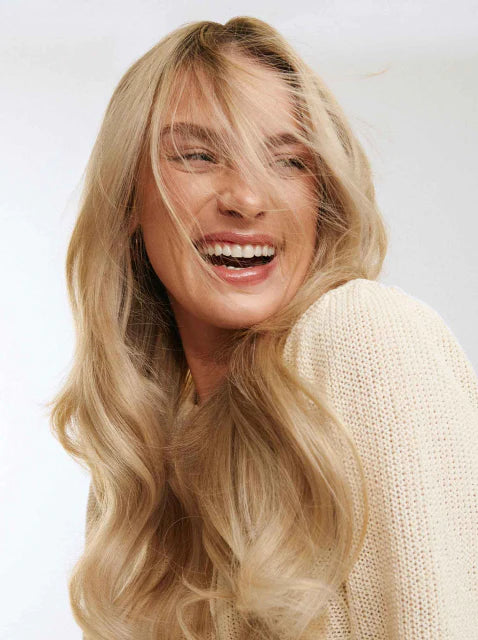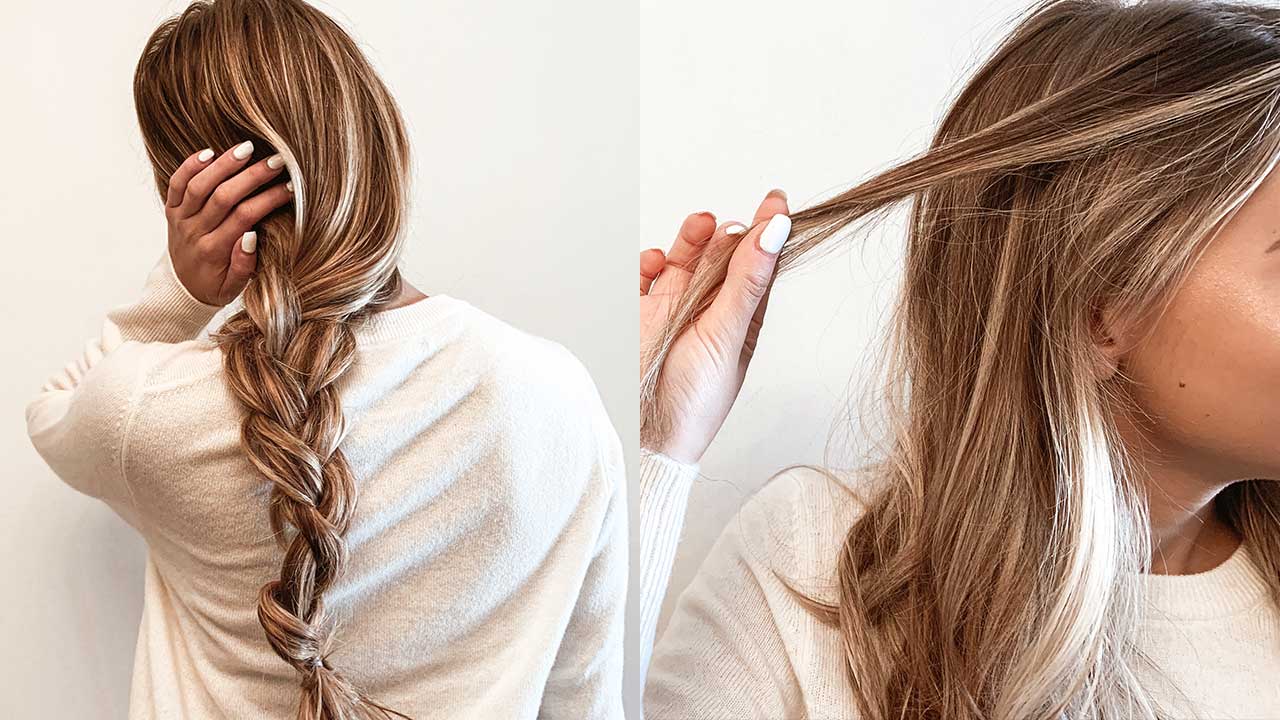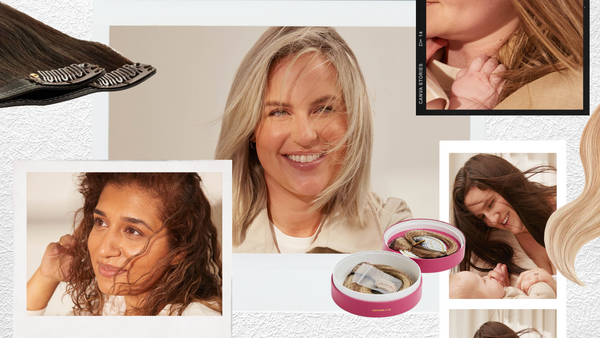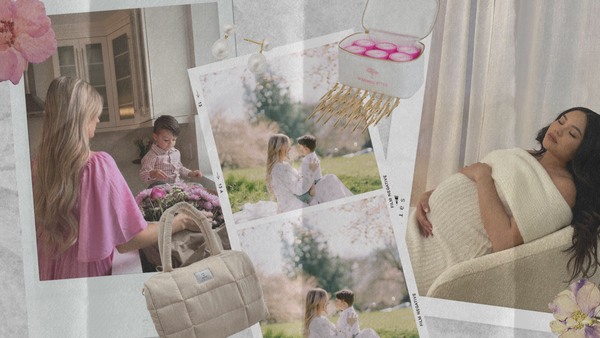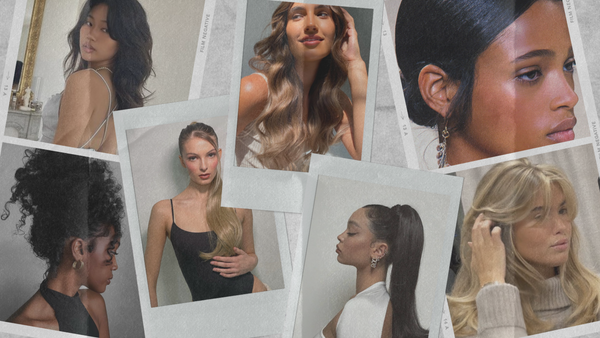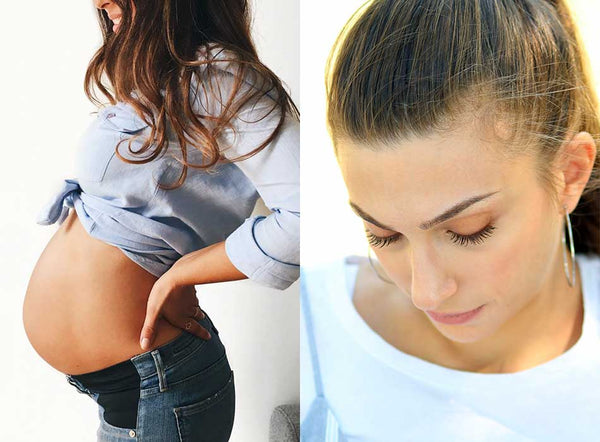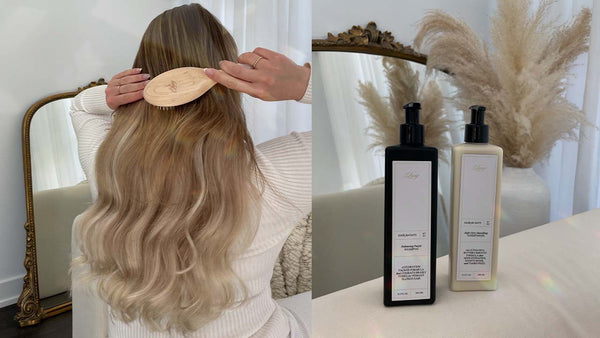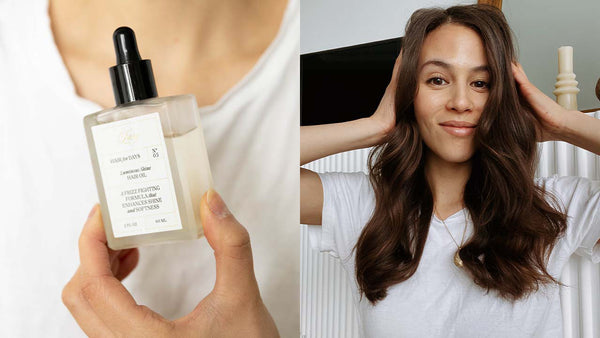Think you know your hair type but can't seem to find products that work? Much like understanding your skin type is vital for curating an effective skin care regime, accurately determining your hair type is crucial. Still, many people maintain a misconception when it comes to their hair, as it can be more difficult to determine than diagnosing your skin as dry or oily. The fact of the matter is that hair types are much more complicated. Need some help? Let’s get to the root of determining your hair type, once and for all.
The obvious categories of thick, thin, curly, or oily barely scratch the surface of what makes up hair types. Just like you, your hair is unique, and truly understanding the type of hair you have means putting time and money into products and treatments that will actually work for your hair and help you make the best hair care decisions.
Here are a few factors to consider in determining your hair type.
Diameter of hair strands
The best place to start in determining your hair type is to begin by measuring the diameter of a single strand of hair. Take one strand of hair between your fingertips. Don’t feel anything? This is a sign of fine hair. If you do feel the lone strand, your hair is of medium width, and if it feels thick or textured, your hair is likely coarse.
Another strand test includes taking one single strand and laying it on a flat surface. If it’s barely visible, it is fine. If it looks textured and thick, your hair is coarse. Anything in between is medium. Setting a single strand of hair next to a piece of thread can also help you gauge the diameter or width of your hair; if it’s about the same width, your hair is medium. If it is thicker than the thread, your hair is thick. Similarly, if it is thinner, your hair is fine.

Hair Density
People often confuse diameter and hair density to be one and the same, but this is far from the truth. A person may have a thin hair strand width but have a thick amount of hair. Essentially, hair density refers to how much hair you actually have – the number of strands themselves and not how thick each one is. Thin diameter does not always equal thin density, nor does medium diameter equal medium density. More often than not, people will have differing densities and diameters.
The method to determining your hair density is simple; take a handful of hair from the front of your head and gently pull it to the side. Is a lot of your scalp visible between the bunches of strands? If so, this means you have thin density, if you can barely see your scalp at all, your hair’s density is thick. Anything in between is medium density.
Choosing hair products according to the density of your hair
Hair density and diameter are key factors in helping to determine the type of products to use. For instance, someone with dense hair and coarse hair strands will need smoothing, anti-frizz products, while someone with thin density hair and coarse hair strands will need volumizing products, to make the hair look fuller.
For low density hair, hair extensions are a girl’s best friend. Luxy Hair extensions are made of 100% Remy Human hair, which blend seamlessly with your natural hair and easily add volume and length by simply clipping them in. Luxy Hair's Seamless Collection is perfect for ladies with thin or medium density hair as the wefts sit flat against the natural hair and offer a lighter feel while still offering volume and length.
Ladies with high density can also amp up their look with hair extensions. Luxy Hair's Classic Collection offers a wide range of thickness to accommodate thin to thick hair, and short to long hair.
Elasticity
Have you ever tried stretching out a hair strand before? This is a simple way to determine the elasticity and strength of your hair. If the hair strand snaps immediately after trying to pull it between your fingers, your elasticity is low, whereas if you’re able to stretch the strand, your hair's elasticity is high.
Hair elasticity is a healthy hair indicator and helps determine how well your hair can hold any styling. High elasticity hair is better able to retain shape such as curls, waves, or other hairstyles easily, whereas low elasticity hair may need more product to hold styles, or may not be able to hold shape for very long. With low elasticity hair, it’s important to look for strengthening products and treatments like hair masks to prevent breakage and reinforce your strands.

Porosity
Chemical treatments with hair dyes or perming always cause some damage to the hair, no matter how healthy, thick and luscious your strands may be. Before undergoing another chemical treatment, try a porosity test. Porosity is your hair’s ability to absorb moisture and product and can also help you determine the type of chemical treatments your hair can withstand.
The porosity test
For the porosity test, fill a bowl with water and place a single strand of hair in the bowl. If your strand sinks to the bottom it has high porosity and is absorbing all the moisture. If your strand remains under the surface but floats above the bottom of the bowl, your hair is well-balanced and is of “normal” porosity. If the strand of hair floats above the surface of the water your hair has low porosity and does not absorb moisture easily.
Hair with high porosity
Hair with high porosity means there may be tears or damage around the cuticle, this can be caused by chemical hair treatments or heat styling, among other factors. It also means the hair can easily and quickly soak up product, meaning you usually need to apply more to feel or see its effects. Even with highly porous hair, it may absorb product quickly, but doesn’t necessarily mean it is hydrated or properly nourished. With highly porous hair, it’s best to avoid heat styling and treatments high in chemicals that can continue to dry out the hair. Instead look to hair masks, oils, and products that will provide moisture and help repair the damaged cuticles.
Hair with low porosity
For hair with low porosity, the cuticle lays flat on the outside blocking water or moisture from being absorbed into the strands. If your hair takes longer to dry or products seem to build up into the hair instead of blending in, these are signs of low porosity hair. To get the most out of products, try applying them while the hair is damp and ensure products are evenly distributed to prevent build-up. People with low porosity hair may find they may need more than one chemical treatment when coloring, straightening, or curling their hair, but repeating several chemical treatments can be heavily damaging. Make sure to use products for color-treated hair, for example, and moisturizing treatments to help lock the style in, but also maintain the health of your hair.

Hair extensions according to your hair's porosity
Whether for low or highly porous hair, hair extensions are a chemical-free way to experiment not just with color, but with different textures, lengths, and styles. Luxy Hair’s Balayage and Ombre Extensions are clipped-in and are the fastest, easiest, and safest way to play with color with your natural look while also adding length and fullness in just minutes. Experiment without the damage for a refreshed look or sun-kissed dimension, a perfect option as we move into warmer weather!
Hair products according to your hair's porosity
Coarse hair has a lot of texture and therefore, it is usually prone to frizz and dryness as this hair type does not retain water very well. For coarse hair, use moisturizing shampoos and conditioners, especially ones that contain Glycerin as this ingredient helps to hydrate the hair strands and lock in moisture. Using hair oils – especially those made of coconut, argan, or baobab oil will also help to tame frizz. Look for sprays or serums with anti-frizz labels to help finish off your looks.
For thin hair, it’s best to look for products that will help prevent breakage or shedding as well as stimulate growth and promote thickness. Looking for shampoos and conditioners with ingredients such as Vitamin E, biotin, and amino acids will help promote thicker, healthy hair.

Oily vs. Dry scalp
If you’re a frequent reader here, you know that the health of the scalp is the foundation for overall hair health. It’s important to note, someone can also have an oilier scalp, but have dry or split ends, in which case the distribution of the products you use and how you apply it is important. For instance, in this situation, conditioner should be applied in the mid-shaft towards the bottom of the hair to hydrate where it is needed and keep excess moisture or oil away from the scalp.
To determine how oily or not your scalp is, inspect your hair and scalp on the second day after a wash. If it appears slick or greasy, you have an oily scalp. If you see flakes forming, you have a dry scalp, and if it looks the same as the day before your scalp is well-balanced.
For a dry scalp, looks for products and treatments that will hydrate and cleanse. For an oily scalp, don’t fall into the common misconception that you have to wash more often, as this could cause more oil build-up since the scalp will produce more oil to compensate for the natural oil loss during washing and drying. Try to minimize the number of products you use in your hair and be sure to rinse it out when you do. Look for shampoos and conditioners that are sulfate-free and silicone-free and avoid heavy oils like our Charcoal Detox Shampoo and High Gloss Smoothing Conditioner.

Texture
We saved the easiest for last. Most of us can determine on our own whether our hair is straight, wavy, or curly. Sometimes texture can change as we age or experience hormonal changes such as during pregnancy or using certain medication such as birth control pills.
There are products specifically made to hold curls or smooth out straight hair, so it’s easy to mix and match products you need for your texture along with accommodating the needs of your hair’s density and porosity.

What it all means
After going through the little hair tests, you’ll likely find your hair may be a mix; low density, but highly porous, or thick diameter but low elasticity. Either way having a holistic understanding of your hair type makes shopping for products and how you use them a lot easier. Just because most products like shampoo and conditioners come as sets, don’t be afraid to mix and match for what you need. With so many products out there, brands are highly conscious of labeling their products for specific hair types, so just as you read the nutrition label on your food, take a minute to review the ingredients list on your hair products too.
Knowing your hair porosity combined with its density and elasticity level, will also help you determine the type of chemical treatments your hair can withstand. For example, if you have low porosity and thin hair, it’s best to avoid extreme treatments such as bleaching as it can fry and break your hair.
Going through all the tests may feel overwhelming all at once, but a holistic view of your hair type will make for better and easier hair care decisions to ensure your tresses always look and feel their best.
Written by: Rosalyn Solomon





